In 1665, the local
government (Owari-han) prohibited cutting trees in the area. Many trees were cut to build
castles and residences back then, therefore, landslides frequently happened.
Owari-han decided to protect mountains and forests. I totally agree with
their long-term policy.
The recreation
forest was the forestry base and the birthplace of forest bathing in Japan. The train which carried
timber is a popular tourism event now.
赤沢自然休養林は、1665年に尾張藩が伐採を禁止した留山(とめやま)でした。江戸初期に築城や都市の復興等で伐採が急増したため、山崩れが各地で起こり、留山にして森林を保護したのです。開発し尽くさないことに感心します。(木を刈り取ってしまった山は、尽山(つきやま)と呼びました)。自然休養林は、かつての林業の拠点であり、日本の森林浴発祥の地です。
かつて木材を運んだ鉄道は今や人気アトラクションになっています。
The train slowly ran in the forest. The role of carrying timber was taken over by truck in 1975.
ゆっくりと森の中を進んでいきます。木材輸送の役割は、1975年にトラックに引き継ぎました。
Forestry railway memorial museum、森林鉄道記念館
The small museum is at the ex-starting station. The train car in front was a barbershop. Forestry workers stayed in forest, so the train car visited their sites. It says, “The day when the train car came was a feel-good day. Because, the day to return to their own house was getting closer.”
森林鉄道の始発駅にあります。玄関に置かれているのは理髪車。山中で合宿生活をしていた営林職員が利用しました。パネルには「理髪車が巡回してくる日は、我が家へ帰るときの近づいた心楽しい日であった」と書かれています。
In the exhibition room, many photos are exhibited together with tools, uniforms and so on.
展示スペースには、鉄道のメンテナンス用具や木曽地方帝室林野局長の礼服などとともに多くの写真が展示されています。
The photo on the left shows inside the barber train. The one on the right is snow removal; what a hard work it was!
理髪車の車内の写真もあります。右は除雪作業。たいへんな仕事ですね。
Wood was fully loaded! 木材満載で森の中を走りました。Recovery work for a derailed diesel locomotive. There were many curves and heavy wood on the car; I guess accident often happened.
脱線したディーゼル機関車の復旧作業。曲がりくねった線路なので事故も多かったことでしょう。
Forest museum、森林資料館
The exhibit is a 2/3 scale model of a timber on a cart. Three selected Japanese cypress trees are cut and are brought to Ise Shrine. The shrine is rebuilt every 20 years, and the deity dwelling vessels are made from the timbers. It is honor of locals to supply timber for the shrine.
伊勢神宮式年遷宮用の御神木を載せて上松町内でお木曳き行事を行うための車の2/3モデルです。御神木を使って御神体を納める器・御樋代木(みひしろぎ)を作ります。地元の誇りですね。
The event to send timbers to the shrine was held in June of 2025. It was a special elementally school holiday, so most of all residents including pupils participated in the event. The banner “太一” is symbol of Ise Shrine.
2025年6月、20年に一度の御神木祭が行われました。小学校は休みで、地元は総出です。伊勢神宮を表す「太一」の旗が立てられています。
They sang while drawing the cart. The lyrics varied; each one was written on the folding fan. “The tree was grown in our forest. It is the best Japanese cypress. We send it to Ise Shrine. Enyara-yoitose!” Locals and visitors celebrated the departure. The timber was not just material in Japan; it took in people’s prayer. I like the thought. I'm happy to live in this country.
“木曽の深山(みやま)で育てられ、日の本一のこの檜、伊勢の社へ納めます。エンヤラヨ~イトセ”など、それぞれの歌詞で歌う木遣り。木の出発を祝います。物にも魂、日本人らしいですね。いい国です。生まれて良かった。
They don’t use machine to cut the trees. There is a traditional way because it is a Shinto ritual.
御樋代木の伐採は神事です。斧を使って切り倒されます。
The panels show why the local government (Owari-han) prohibited cutting trees in 1665, and how they protected forests. The regulation was severe; there was a saying “A cypress is worthy of a head (death penalty)”. The forest was restored in around 1800. I think we Japanese never exhaust resources.
江戸初期に、名古屋城などの築城、武家屋敷の建設など都市の復興が行われ木材需要が急増しました。はげ山が増え、従来は伐採していなかった奥山でも伐採が始まりました。山崩れも多発しました。1665年、木曽谷を領地とする尾張藩は伐採を禁止する留山を設け、森林保護に乗り出しました。1800年頃には、森林が回復。日本人は資源を取り尽くすということをしないと思います。
規制は厳しく、ヒノキなど木曽五木は庶民が伐採することが禁じられ、「桧一本 首一つ」の言葉が残っています。
The methods of forestry are displayed. The picture at lower left shows a woodcutter puts the edge of the tree he cut on the stump. He thanks to the forest deity; it is a rite. The behavior is very Japanese. As long as we have same mindset with him, forest destruction would not occur.
木曽式伐木運材法などが説明されています。伐採後の切り株にその木の先端を挿して、山の神(樹霊)に伐採を報告し感謝する株祭りを行います(左下)。日本人らしいですね。この気持ちがある限り山は破壊されません。
The old way to transport trees is exhibited. Trees were cut, were carried by sled (“kinma” or literally “wooden horse”), were moved by slider, then were float on river. The width of river becomes wider, so raft was made by trees and went downstream. It was done in winter which is not flood season. Trees stuck at rock were recovered and became raft (lower left). Although it was hard and dangerous work, it would have been worthy job.
Surprisingly enough, the way was practiced until 1920. Thereafter, the way advanced to railway, then to truck.
かつては伐った木を、修羅や木馬(きんま)で山から出し、川幅が広くなると川に流し、更に川幅が広くなると筏を組んで流していました。その後は、森林鉄道、トラックと運搬方法が進化していきます。
運材は出水を避け、初冬から寒中に行いました。岩に引っかかった木は鳶竿で外し、小さな筏にして下流へ移動します(左下)。きつい仕事だけど、やりがいはあったでしょう。なんと1920年まで行われていました。
Lunchbox is set in front of its container. I wonder whether someone was in charge of carrying lunchboxes.
弁当箱(手前)と弁当運搬器。運搬担当者がいたということですね。
Heavy machinery works in forest nowadays. Those are specific ones.
今はさまざまな特殊重機が活躍しています。
There is a stock yard on the way to Akasawa Natural Recreation Forest; forestry prospers until now.
自然休養林へ行く途中には集材場があります。今も林業が盛んです。
The section above is about phytoncides which is emitted from the trees and is said to relax people. Akazawa forest is the birthplace of forest bathing in Japan.
フィトンチッドについての説明です。赤沢自然休養林は、日本の森林浴発祥の地です。
Creatures in forest are displayed. The exhibit of “field signs” (shit, scratching trace and so on, upper left) is rare. Actual ones are also exhibited. The knowledge about them is important to avoid encountering wild animals such as bear.
Geology and meteorology are also exhibited. Although it’s a small museum, we can understand forest well.
木を含む森の生き物も説明されています。剥製の展示はよくあるのですが、フィールドサイン(左上、うんちや引っかき傷)についても展示されていました。森で熊に出会わないためにも重要な知識です。
地質や気候についても説明されていて、小さな資料館ですが、森のことがよく分かります。
Reference site: https://kiso-hinoki.jp/colibri-wp/tourist/akasawa/ (in Japanese), accessed in July, 2025
Visited in August, 2024
Previous post (part 2 of this article): Meiji Mura (1/2) 、博物館 明治村(part 1)
Next post (museum in the same prefecture): Tenryu River learning center “Kawaranbe”、天竜川総合学習館・かわらんべ
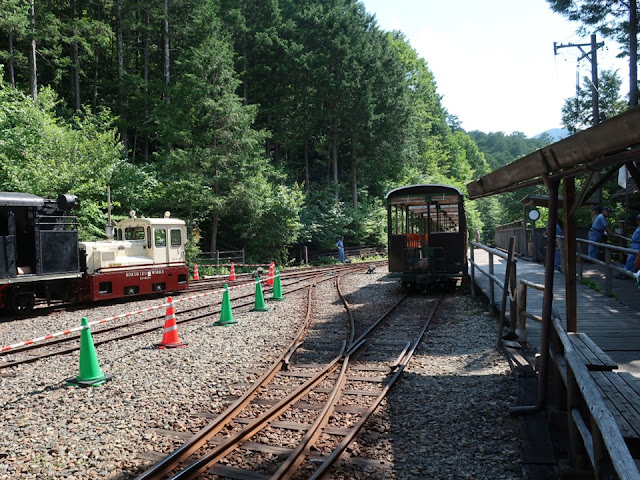

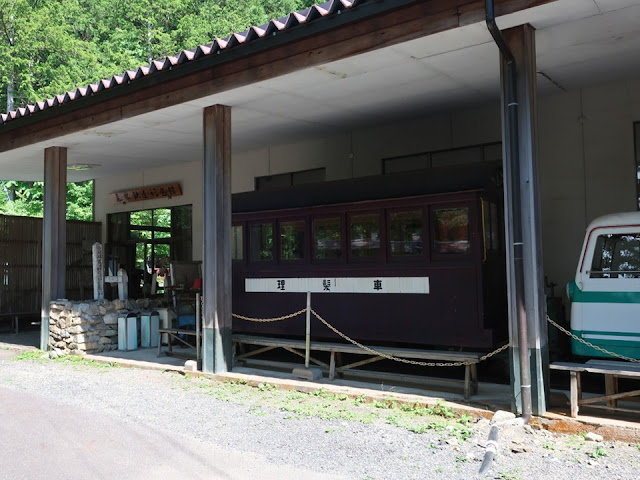




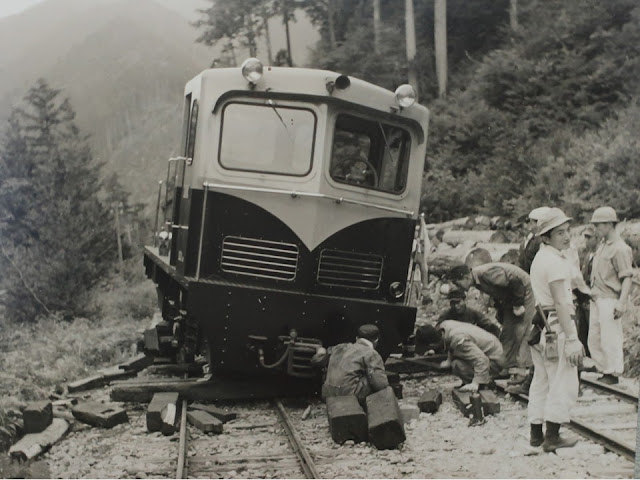




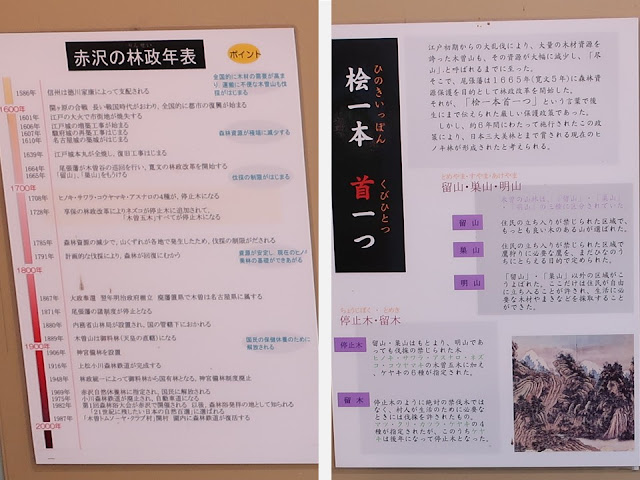






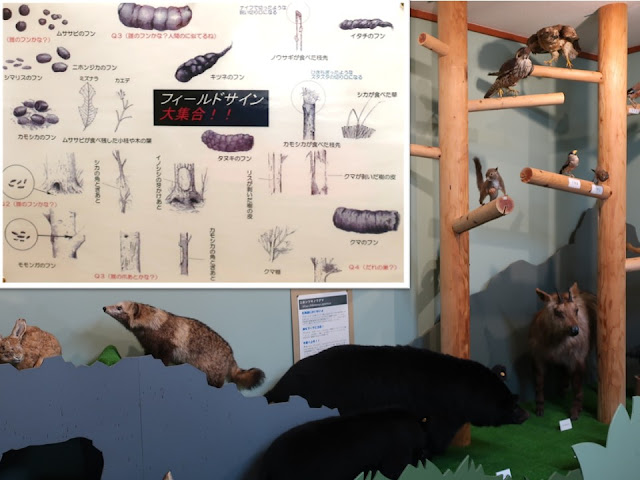

Comments
Post a Comment